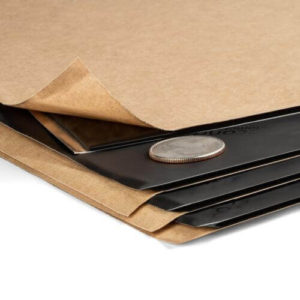Second Skin vs Dynamat: Which is better?
The main difference between Second Skin and Dynamat is the overall thickness of their mass loaded vinyl. Second skin’s MLV products are generally thicker and denser than Dynamat’s MLV products, although they do cost more.
My favorite thing to do on vacation is take a road trip. I take either a good friend or my entire family.

My car is not fancy, but I love being out on the open road, traveling to new places, and spending time with my friends and family on the trip.
However, during this last trip we had more trouble than usual. The kids in the back had trouble hearing me. If I wanted to listen to the radio, I turned it up too loud and my wife could not sleep.
When we tried to listen to podcasts or anything other than loud music, we had a lot of trouble hearing it and enjoying it. A big part of the problem was road noise, I realized. It was coming up under the floor and through the doors.
I wondered if I could do anything about it. Short of buying a new car, what could I do?
I am an Amazon Affiliate, which means I may make a commission if you purchase something through the links here. There is NO extra cost to you at all, and THANK YOU so much for the support.
Related: Noico vs Dynamat: The Faceoff
Contents: Skip to section
How will this article help you?
You might be one of two customers: an owner of a family car who wants a quieter ride, or you might be a person who is really into your car stereo quality and interior automobile acoustics.
This article will help both of you. The materials described and compared below will help people on both ends of the automotive acoustics spectrum.
This article will introduce you to the two biggest names and their flagship products in audio soundproofing: Second Skin’s Damplifier Pro and Dynamat’s Xtreme.
It will explain in precise detail the differences between the two products and what people look for when choosing a sound deadening product, and it will go over the details of installing the materials. (Luckily the installation for both is very similar.)
The goal of this article is to help you decide which of the two best meets your needs. Much of that depends on how comfortable and excited you are about the work involved with soundproofing your car.
Related: Soundskins vs Dynamat: Battle of the sound deadeners
Sound deadening materials
I started doing my research and realized there are two big names out there for soundproofing cars: Second Skin Audio and Dynamat.
They seemed neck and neck for product and quality. There are many others, but these seemed to be two of the best sellers and they have very similar product lines.
Dynamat has been around since the late 1980s, whereas Second Skin was founded in 2000, so Dynamat was already well-established when Second skin came on to the scene.

The primary option for soundproofing cars involves adding layers of materials to the floors, trunk, ceiling, and door which absorb and block sound from coming inside the car from the road. In terms of convenience and best sound absorption for the best price, these soundproofing mats seemed to be the best options.
Both companies agree that you should avoid cheap asphalt mats — these absorb sound nowhere near as well as other materials. Asphalt does not handle vibrations as well; it may give off chemicals into the air if it gets hot enough. I quickly decided that spending the money on something that did not really work was a potential waste of money.
Both of the leading companies, Second Skin and Dynamat use butyl rubber — a material known for its thermal insulation, sound deadening, and natural adhesiveness to other materials (say, for example, the inside panel of a car door). This material absorbs sound and vibrational energy and essentially “wicks” it away, the audio equivalent of exercise clothing that wicks away sweat.
How much of a difference do they really make? Sound perception is not linear; something that is only a little bit louder may be perceived as twice as loud. So cutting back on sound and vibration a relatively small amount actually makes quite a bit of difference in perception. So yes, in terms of perception, these mats make a noticeable difference.
So which did I choose? Which should you choose? Below I will answer those questions.
Related: Top 5 Best Quiet Hair Clippers for Toddlers
The Process of Soundproofing with Rubber Mats
For the comparison below to be of the most relevant to you, it would probably help if you understand the process of installing these butyl rubber mats. I will briefly discuss those steps before jumping into the comparison. (take note these steps are pretty similar to soundproofing your car hood too)
Step 1: Choosing what to soundproof in your car
When you soundproof your car you have several areas you can focus on: flooring, car doors, trunk, and roof. You can do only one of these or you can do all of them. You will need to measure the square feet of what you want to cover and then purchase the corresponding amount of mats (with a little extra to be safe).
Step 2: Measuring
Most people start with flooring. However the steps below will work for several sections of the car: floor, roof, and trunk.
If you have a carpet it is best that you remove it and clean out the paneling below really well. The cleaner it is, the better your mats will stick. If you do not have carpet, you can adhere soundproofing to the flooring and then place your traditional floor mats on top. Measure your flooring carefully after you have removed your mats and/or carpeting.
Step 3: Cutting
Be sure you are wearing work gloves. The foil holding the butyl rubber mat together can be sharp at the edges–worse than a paper cut! Also, the non-foil side of the mat is extremely sticky — not something you want your fingers attached to if you can help it. Cut the matting to fit your floor spaces.
Step 4: Lay down the mat
Peel the mat free from its divider. Be careful with this, if it touches anything before the floor, it may get stuck there. Foil side up, lay down the matting from one end, slowly lowering the rest to the other end.
You want to ensure the mat lays as flat as possible. It’s very hard to pull up again if you need to redo it.
Step 5: Roller
Your mats may have come with a roller. If not – you probably want to pick one up. Use the roller to flatten the mat out further and ensure tight fit against the panel.
You also want to get out any air bubbles — these will interfere with the soundproofing and may make the mat less adhesive to panel in the long run.
Step 6: Car doors
 This is more challenging but makes a big difference if you decide you are up for it.
This is more challenging but makes a big difference if you decide you are up for it.
Remove the interior car door panel. Once inside you will likely need to remove any moving, mechanical parts or anything blocking you from getting at the outer panel.
The rest of the process is similar to the above: measure, cut, lay the mat, roller.
Related: How to soundproof a garage door from the inside? 3 easy ways to get started
Second Skin vs Dynamat information
Now that you have an understanding of the companies, materials, and processes, let’s get to the comparison between the two.
More about Dynamat
Dynamat sells its materials for a variety of uses, marketing the usefulness of its materials to cut down sound throughout a home from appliances to ducts and cars.
The butyl rubber mats include an adhesive peel that needs to be removed and then the mat itself will directly adhere to the hard surface — of a dishwasher panel or the inside of a car door. In both cases the material blocks sound and absorbs vibrational energy, rendering the space much quieter.
Relatively easy to install, this product can be placed in door frames, in the trunk, and there are pads for flooring. In each case it will block road noise, temperature and cut back on vibrational sound. It can be bought in different amounts and square feet.
These packages have been measured out to address standard size trunks, car doors, even license plates.
There are several different packages, making selection easier for the customer.
A “Door” package will cover a single door; a trunk covers most standard trunks and a bulk package will cover multiple doors, or a combination of trunk and flooring.
These are even packages that include accessories such as a roller and taping.
Pros
- Makes a huge difference in car stereos – increasing clarity and bass
- Cuts down on rattling in older cars
- Various packages make product selection easier
- Some packages include accessories, making the process much easier
Cons
- Less firm than Second skin and therefore more difficult to flatly line up against paneling without air bubbles
- Difficult to find the right variation in packaging size if you want to most or parts of the car
- If not applied carefully, gaps under the matting, or between the mat and the edge of the door or floor will let in as much sound as the mat is blocking out
More about Second Skin
Where Dynamat sells materials intended for use across the home and car, Second Skin specializes in materials for automotive acoustics.
Second Skin material promises to cut down on vibrational energy, block road noise, and even insulate against the hot and cold.
The butyl rubber mat is particularly thick and has a thick foil layer holding it together and enabling you to work on one side of it to flatten attach it properly to the panels.
Second Skin is so confident in the adhesive properties of its products, they specifically say the adhesion is guaranteed to adhere to the metal of the car for the life of the vehicle.
For this adhesion to fully take hold a roller must be used once the sticky side has been attached to car panels; the roller will help get rid of air bubbles and ensure the mat is fully adhered to the door panel. The mats are sold in several different square feet sizes.
Like Dynamat, these can be used in the trunk, car floor, roof, and door paneling. Second skin offers additional layers to add to the insulation and thermal barriers. Interestingly, Second Skin also offers sound deadening spray and paint as well for the underside of the car.
Pros
- Adhesive is very easy to work with
- Material is firm, making it easy to attach and prevent air bubbles
- Thicker than Dynamat and therefore a little more effective in blocking out sound and insulating against vibration and temperature variance
Cons
- Foil is sharp and requires safety gloves
- Adhesive side will stick to fingers if not careful
- Sizing is more of a challenge if you are not an expert
- Somewhat pricey compared to other products
Related: How to soundproof a room for drums: Turn it into a reality now!
Dynamat vs Second Skin comparison
In terms of choosing between these products, most people cite three key factors:
- Price per square foot
- Ease of selection and installation
- Sound dampening effectiveness
Sound Dampening Effectiveness
As is probably obvious by now, these two products are very close together in terms of effectiveness and quality.
Both are made from the same material, butyl rubber with a foil liner, and are naturally self-adhesive. Reviewers of both products tend to be very satisfied with these products, indicating they both cut back on vibration, rattling, and general road noise.
However, user reviews and forum discussions tend to favor Second Skin because it is thicker and denser. In the end it is definitely a little thicker than Dynamat, meaning it will handle vibrations and noise a little better. However, to most “untrained” ears, there is very little difference here.
Winner: Second Skin
Ease of Selection and Installation
The process for installing them both is very much the same: measure your surface, cut the mat, attach the sticky side to the panel and roll until fully adhered.
Both products can be used throughout the car to reduce road noise in several different ways. When installing both products, razors, measuring tape, rollers and safety gloves are required or recommended.
Dynamat stands out in this category primarily because it goes the extra mile to make choices and installation a little easier. It offers the matts in several different size packages, recommending each for a different component of the car (trunk, doors etc.).
These packages may also include tools such as gloves, rollers, and tape. These extra efforts make Dynamat easier to use for those who are not as familiar with soundproofing.
Winner: Dynamat
Price
While prices change over time and vary somewhat from retailer to retailer, overall Second Skin is more expensive.
This is not to suggest they are price gouging. Second Skin is more specialized than Dynamat and newer and tends to be favored as ultimately a little quieter.
Winner: Dynamat
Overall value
These two products are just too close to call a definitive winner. I find it hard to fault any one of them or pick sides.
The best product probably depends on how comfortable you are with the process itself.
For the more casual soundproofing: Dynamat is probably the best option.
Its packaging and accessory inclusion takes a lot of the guesswork out of getting the right tools and amount.
It is also a little less expensive, and the difference in ultimate sound dampening quality will not be noticable for most people.
For car audio enthusiasts: Second Skin is the best option here.
Reviewers and discussions in forums recommend Second Skin for slightly better audio quality resulting from its slightly thicker mats.
People who are into soundproofing will likely have the required tools and will not pre-designed need a package to help them gauge square feet and necessary accessories.
Enthusiasts are more likely to have experience measuring and cutting soundproofing materials. Lastly, these specialized individuals are more likely to notice the subtle differences in sound quality that Second Skin seems to provide over Dynamat.
Second Skin vs Dynamat: Conclusion
Whether you want your car ride to be quieter so you can enjoy more family time, or if you want your car stereo to sound richer and crisper, these soundproofing strategies and materials above will help.
Both of these brands are solid choices, and whichever you choose, you are bound to see marked improvements in your car’s acoustics.
Try them out and let me know what worked for you!
Additional Resources:
- How to make air conditioner quieter? 6 simple tips that work!
- How much does it cost to soundproof a room: Smart ways to save money
- How to stop wind from blowing down chimney: 3 simple steps you can follow right now
- 6 Best Quiet Pellet Guns 2020
- 6 Best Quiet Coffee Grinders (Updated 2020)
- Latest articles on SoundProofingHacks
- Complete buying guides


